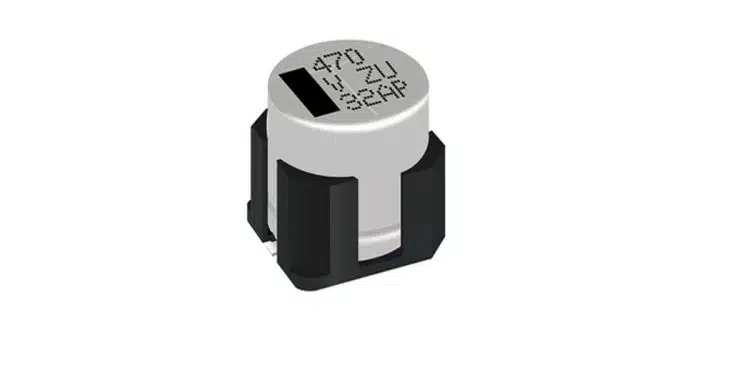Panasonic Industry is expanding production of its larger hybrid aluminum capacitors to meet the increasing demand for power supplies in AI datacenters.
These capacitors, offering higher endurance and low ESR, are essential components in power supplies for AI processors, especially in high-volume applications like 6x6mm and 10x10mm families.
Panasonic Industry is responding to the increasing demand for power supplies in AI datacentres by expanding production of its larger hybrid capacitors. These capacitors are a combination of polymer aluminium electrolytic and specialty polymer capacitors, offering higher endurance, low equivalent series resistance (ESR), and greater tolerance for ripple and inrush currents, even in elevated temperature conditions.
The market is showing a particular interest in high-volume 6x6mm diameter capacitors, as well as the more specialized devices at 10x10mm and above in the ZUU, ZC, and ZS surface mount families. These hybrid capacitors are becoming essential components in power supplies for AI processors in datacentres, supporting higher switching frequencies for increased efficiency.
Panasonic’s hybrid capacitors are designed to operate at up to 80V with a capacitance of up to 1000 μF. They offer the advantage of occupying less space on the printed circuit board, making them ideal for smaller power supplies. The ZUU series hybrid capacitors boast a ripple current handling capability of 6.1 Arms maximum, a significant improvement over previous series, at both 125°C and 135°C. Additionally, they feature the largest capacitance value of 1,000 μF and the lowest ESR value of 8mΩ minimum.
These hybrid capacitors not only adhere to AEC-Q200 standards for automotive applications such as pumps, electric power steering, cooling fans, high-current DC-to-DC converters, and ADAS, but they are also increasingly being used in high-reliability power supplies. Applications include DC-to-DC converters and AC-to-DC converters in base stations, servers, routers, switches, and inverter power supplies in robotics, as they can withstand shocks of up to 30G.
To meet the surging demand, Panasonic is expanding production at multiple sites in Malaysia to ensure a steady supply, particularly for the 6x6mm and 10x10mm families. This expansion is pivotal to support the industry’s urgent need for reliable and efficient power supplies in the rapidly evolving landscape of AI datacenters and other high-tech applications.































